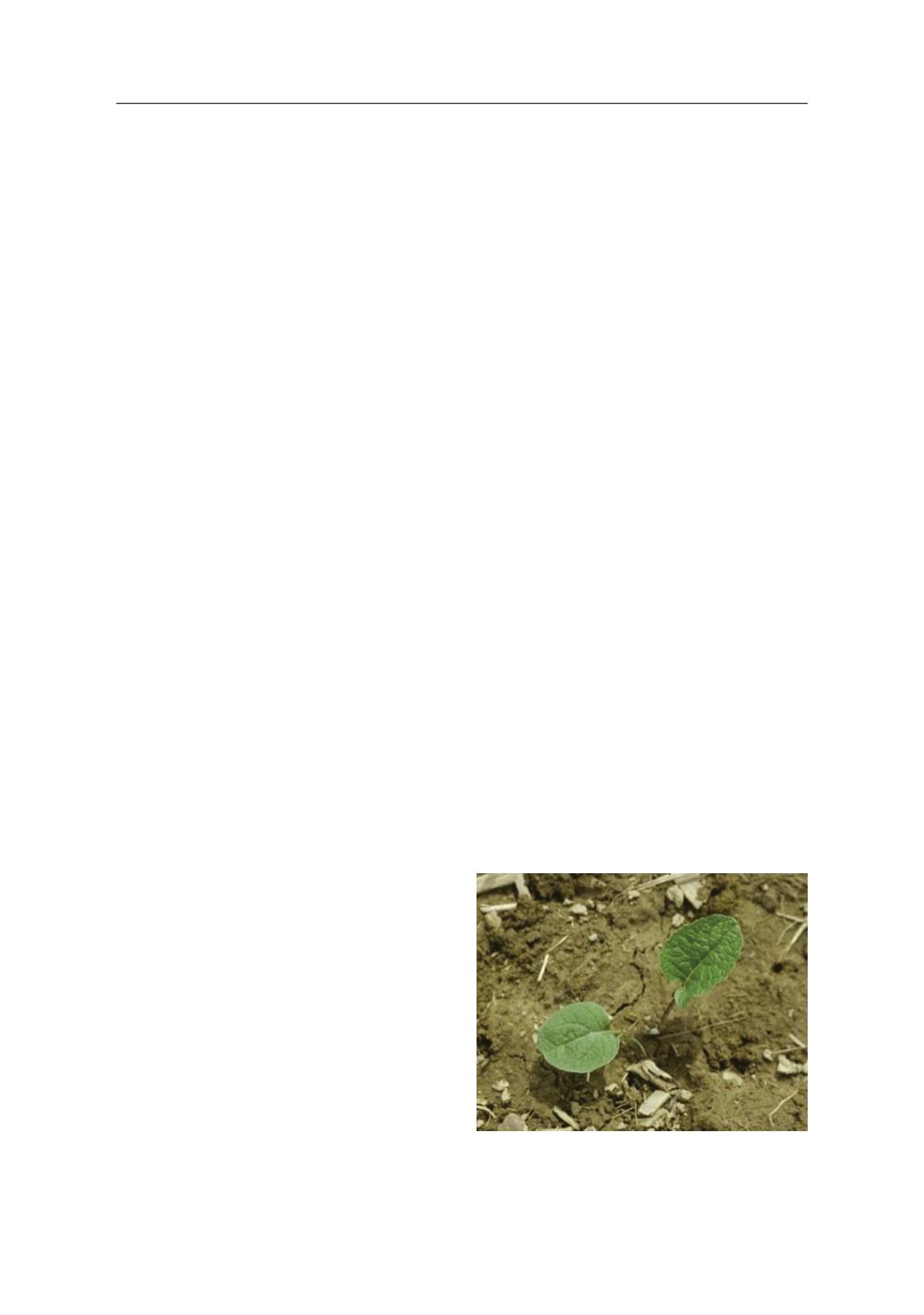
© Benaki Phytopathological Institute
Damalas
et al.
16
In the spring of 2014, randomly selected
populations of
Arctium minus
were studied
either from abandoned fields or along road-
sides near the Farm of Democritus Univer-
sity of Thrace in the rural area of Orestiada
(41
o
30’N latitude, 26
o
32’E, 22masl). Two pop-
ulations were sampled and certain morpho-
logical data (i.e. leaf shape, arrangement,
structure and color, flower shape and color
as well as fruit shape and color) were collect-
ed from three individuals per population. All
capitula per sampled individual were col-
lected in brown paper bags and brought to
the laboratory. Three randomly selected ca-
pitula per individual were opened and the
number of seeds was recorded. Information
on seed productivity is important because
common burdock is reproduced only by
seeds (Wax
et al.
, 1999). The average num-
ber of capitula per plant, measured from
randomly selected populations in Orestia-
da, was found to be 69.7 ± 12.50 and 57.7
± 12.22, respectively, whereas the average
seed number per capitulum reached 30.3 ±
6.03 and 33.3 ± 2.08, respectively. According
to the literature, there is evidence of great
variability in the seed productivity of plants
(Reed and Stephenson, 1972, 1973; Gross
et
al.
, 1980; Straw, 1985), which may be attrib-
uted to various factors, such as the genet-
ic background of populations, the growth
conditions and the level of insect predation
of the seeds as proposed by other authors
(Hawthorn and Hayne, 1978; Straw, 1985;
Kambo and Kotanen, 2014). Therefore, more
research on seed productivity is needed.
From our observations in the field, it was
found that the cotyledons are large, spoon-
shaped, with a waxy surface. The first true
leaves are stalked and ovate with entire and
slightly wavy margins (Gross
et al
., 1980)
(Figure 1). In the first year of growth, the
plant grows as a typical low-growing rosette
of leaves (Figure 2) and then in the second
year it produces a tall and erect flowering
stem (Gross
et al.
, 1980). Rosette leaves are
distinctive due to their large size (elephant
ear), heart-shaped base, wooly undersurface
and hollow leaf stalks (petioles) (Figures 3
and 4). Careful examination of the plants re-
vealed that the upper leaf surface is distinct
green and coarse, whereas the underside is
pale green to gray and wooly. Subsequent
leaves are alternate, oval-shaped (ellipti-
cal), with short hairs, wrinkled between the
veins and bitter tasting. Leaves gradually
become smaller than the basal leaves, less
heart-shaped and attenuated at both ends
as their location progresses up towards the
head of the stem. Additionally, their petioles
become shorter and solid rather than hol-
low. Stem leaves are similar in shape to the
rosette leaves but smaller than them.
Based on our observations in the field,
the stem stays flattened and close to the soil
surface during the rosette stage of growth.
When flowering sets up, the stem elon-
gates producing an erect flower stem that
is much-branched, rough-hairy, hollow and
angular (Figure 5). Flower heads are located
at the ends of the branches or at leaf axils
on the flower stem and are comprised of a
bur with hooked bristles appearing beneath
a closely packed cluster of tubular pur-
plish flowers (Figure 6). Each head has pur-
ple disk flowers with involucral (covering)
bracts modified into narrow hooked bris-
tles. Through this structure a bur is formed
that aids in dispersal of common burdock
seeds by animals and humans. Indeed, the
weed is best known for the hooked bristles
on its burs that stick to fur and clothing (Fig-
ure 7). The seeds within the bur are oblong,
smooth and mottled. In each bur, there are
Figure 1.
Young seedling of
Arctium minus
soon after emer-
gence (original photo by Theodore Webster, USA).


